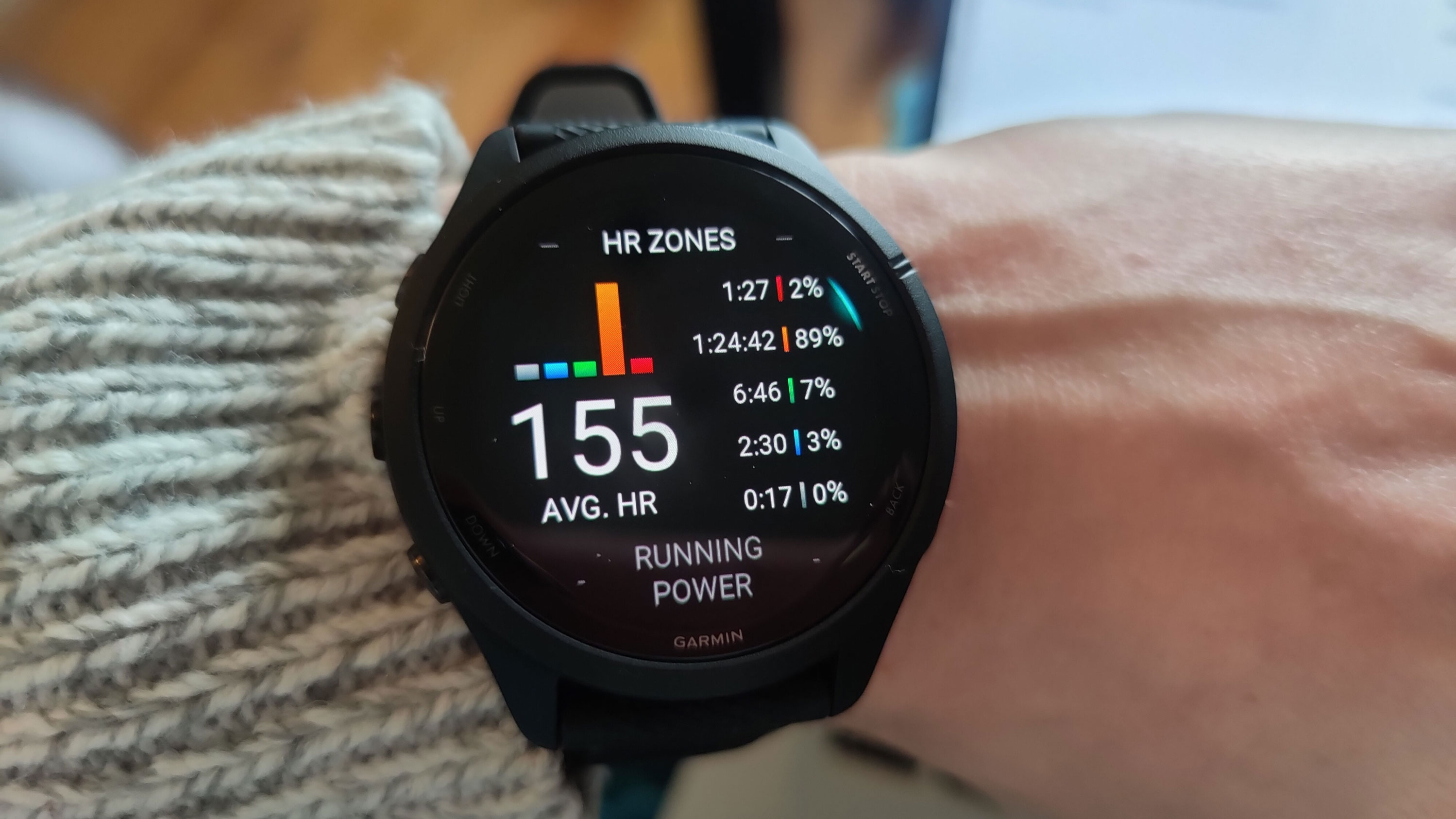TechRadar Verdict
On paper, the Garmin Forerunner 265 and 265S don't feel like much of an update. However, the eye-popping AMOLED touchscreen certainly brings it more into traditional smartwatch territory, rather than a functional sports watch, and the new 'run' button is cute. Time will tell whether the screen's impact on battery life is worth the trade-off.
Pros
- +
First small Forerunner with a touchscreen
- +
Bright, crisp AMOLED visuals
- +
Small and pretty
- +
Run button easier to use with gloves
Cons
- -
More expensive than 255 & 255S
- -
Screen boost means (slightly) worse battery life
Why you can trust TechRadar
Garmin Forerunner 265: Two minute review
The Garmin Forerunner 265 and smaller 265S, alongside its sibling the Garmin Forerunner 965, are the latest iterations (at the time of writing) of Garmin’s flagship Forerunner series. The 265 comes less than a year after the release of the critically-acclaimed 255 series, sporting a few updated features, a redesigned watch case, and an all-new AMOLED screen.
Given that the watch is essentially last year's world-class Forerunner inside, I wasn’t sure whether the 265 would do enough differently to earn its place on our best Garmin watches list.
However, after spending around three weeks wearing the watch, including during a marathon, I can confidently say it’s one of the best Garmin has ever made, it feels familiar yet different at the same time, and despite the few changes on paper, the design language is remarkably refreshing it’s more than a simple iterative update.
The AMOLED touchscreen thankfully doesn’t impact the watch’s substantial battery life too badly: even on GPS mode, it’s capable of hours and hours of use uninterrupted, it’ll last around two weeks in smartwatch mode and charges to full power in around an hour. It's not quite the 'unlimited' battery life of the Garmin Instinct 2X Solar, but it's still leagues ahead of Apple's best. Although the old digital-watch-style display was always clear to read without feeling like another blue-light-emitting screen on your wrist, the AMOLED touchscreen takes the Forerunner and edges it slowly towards the territory of the best Apple Watch and best Wear OS watch models.
The series feels more like true smartwatch competitors rather than dedicated athletic watches, and very viable alternatives to the Apple Watch Ultra for runners who want to pay less. Either way, the 265 series is, for sure, one of the best running watches out there right now.
Garmin's beautiful new AMOLED touchscreen is on par with any other smartwatch you care to mention, even the best Apple Watch, and still measures battery life in days and weeks rather than hours. The Garmin Forerunner 265S purports to have 13 days of life in smartwatch mode, and up to 25 hours in GPS mode. Time will tell if that's accurate.
Otherwise, there are a few differences beyond the screen that separates the Forerunner 265S from its predecessor, the Garmin Forerunner 255S. There's no dedicated 'music' model to signify that the watch has music storage: that's now baked-in to every model in the updated Forerunner line. It's also got the Training Readiness score and Morning Report features previously available to the 955.
Garmin Forerunner 265: Specifications
| Component | Garmin Forerunner 265 | Garmin Forerunner 265S |
|---|---|---|
| Price | $449 / £429 / AU$770 | Row 0 - Cell 2 |
| Dimensions | 46.1 x 46.1 x 12.9 (mm) | 42 x 42 x 12.9 (mm) |
| Weight | 47 g | 39 g |
| Case/bezel | Fibre-reinforced polymer | Fibre-reinforced polymer |
| Display | 416 x 416 px AMOLED, Corning Gorilla Glass | 360 x 360 px AMOLED, Corning Gorilla Glass |
| GPS? | GPS, GLONASS, GALILEO, SATIQ | GPS, GLONASS, GALILEO, SATIQ |
| Battery life | 13 days (20 hours GPS) | 15 days (25 hours GPS) |
| Connection | Bluetooth, ANT+, Wi-Fi | Bluetooth, ANT+, Wi-Fi |
| Water resistant? | Yes, 5ATM | Yes, 5ATM |
Garmin Forerunner 265: Price and availability
- $449 in the US
- £429 in the UK
- AU$770 in Australia
The Garmin Forerunner 265 and 265S are both priced the same despite size differences. The watches cost $449 in the US, £429 in the UK and AU$770 in Australia.
At present, the watch is available from the Garmin website as well as Amazon and other third-party sites. Don't forget to check out what Garmin promo codes are currently available too.
Garmin Forerunner 265: Design
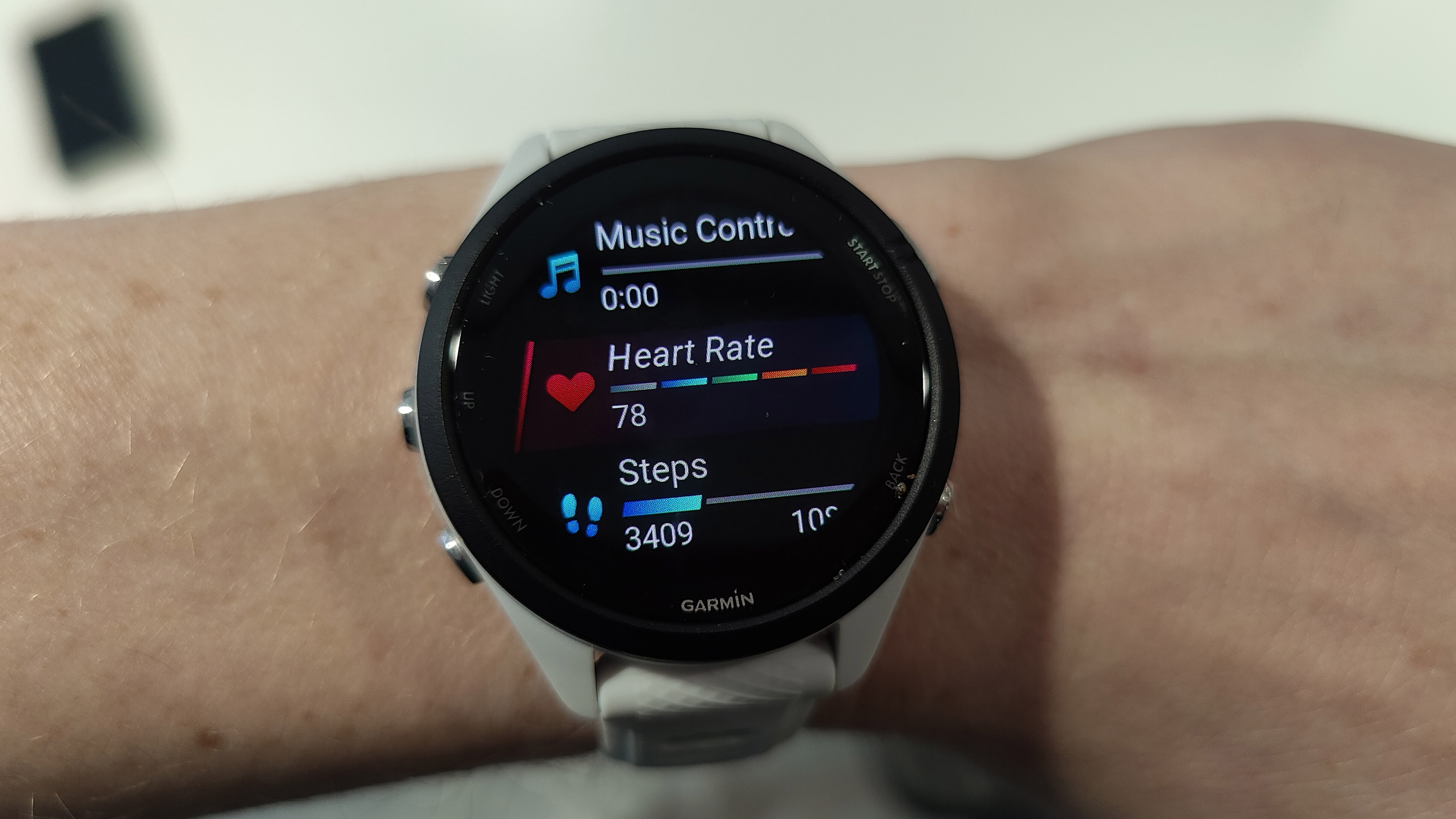
- Screen looks great, with only slight refresh rate lag
- Gorilla Glass means it's as rugged as ever
- New, larger Run button easier to operate mid-workout
The 265 and 265S watches are only slightly bigger than the 255 and 255S models were, at 46.1mm / 42mm compared the older models’ 45.6mm / 41mm. The screen is eye-popping and absolutely gorgeous: 416 x 416 px or 360 x 360 px AMOLED, with a Corning Gorilla Glass lens to ensure the watch stays rugged and hard-wearing enough to survive adventures and triathlons with peace of mind.
Scrolling through the screens, it's not quite as butter-smooth with its refresh rate as the Samsung Galaxy Watch 5 Pro or Apple Watch Ultra, but considering it's got around five times the battery life, I can forgive a slight bit of motion blur. You can see the AMOLED next to the old memory-in-pixel format below, side-by-side with the Garmin Fenix 6X:
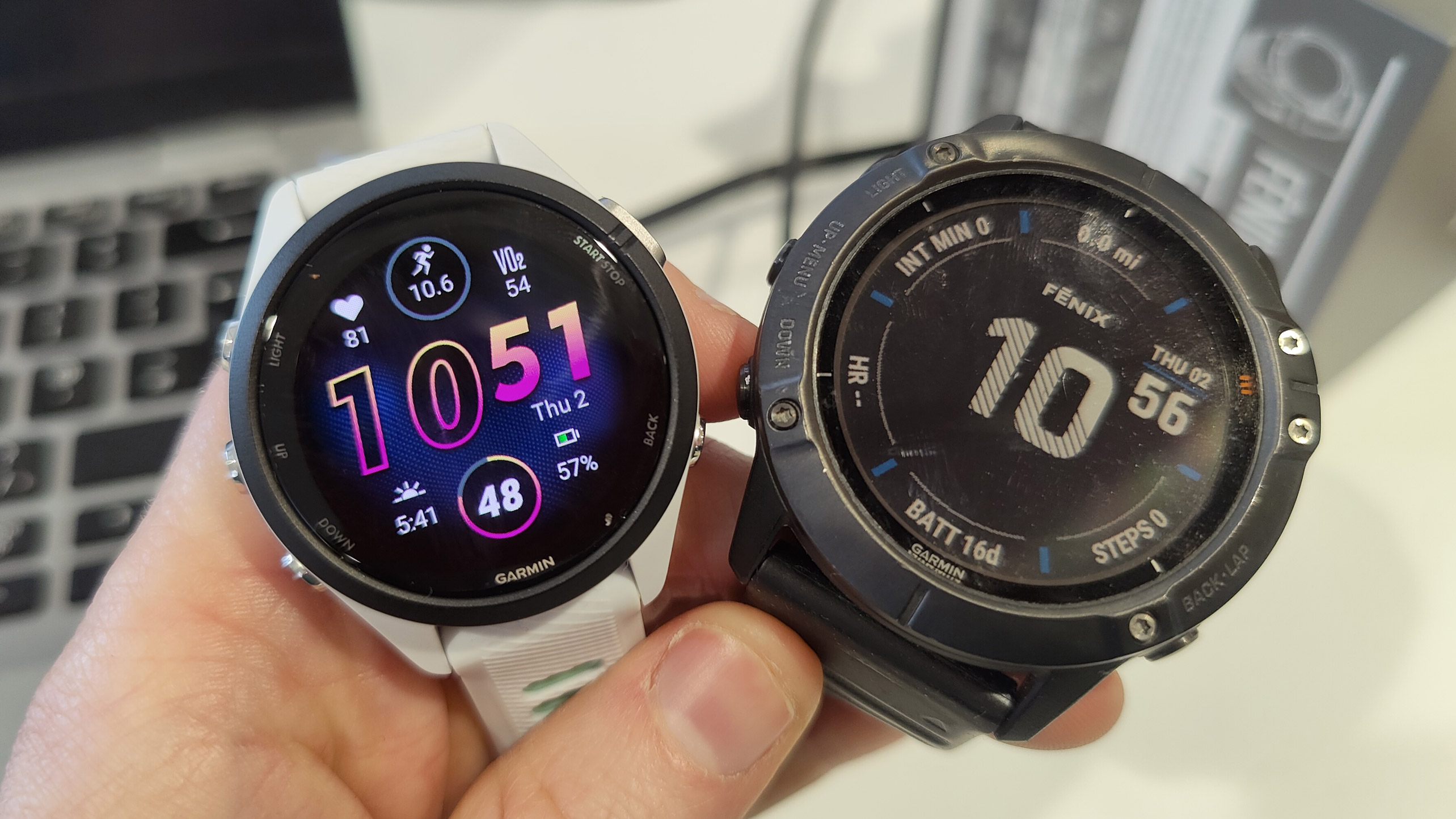
The watch packs a slightly redesigned titanium case and bezel, complete with the larger start-stop button in the top right, appropriately redesigned as a Run button. Even though the other buttons are unchanged, the larger profile of your 'main' button is going to make operating the watch quickly during a workout a breeze, even while wearing gloves. It's more or less the only functionality I use on most runs, unless I need to scroll through my navigation options.
The increased real estate of the Run button makes it easier to operate during a workout or while wearing gloves, which reminds me of the Apple Watch Ultra's Action Button, which protrudes from the case to operate on the same principle. I think we're seeing a trend forming among fitness watches right now with big start-stop buttons which are easier to operate while wearing gloves, and I wouldn't be surprised to see other brands follow suit.
Otherwise, the watch comes with new faces such as the one shown, which takes full advantage of the updated screen and the new ability to tap on a feature to bring up the appropriate widget. Scrolling through your options using the up and down buttons on the watch's left-hand-side will be familiar to anyone who's ever used a Garmin watch before: there's no reinventing the wheel here. It's a brighter version of the 255. However, unlike the 255 series, there's no dedicated 'music' model to signify that the watch has music storage: that's now baked-in to every model in the updated Forerunner line.
The ‘whitestone’ color of the smaller Forerunner 265S I was able to briefly get my hands on is complemented by those lime-green undertones in the band, which extends to the underlay in the recesses of the run button. It's a neat design choice, and I think the watch looks great. The larger Forerunner 265, which I wore every day for around three weeks, is matt black with stone-grey undertones in the same pattern.
- Design score: 5/5
Garmin Forerunner 265: Features
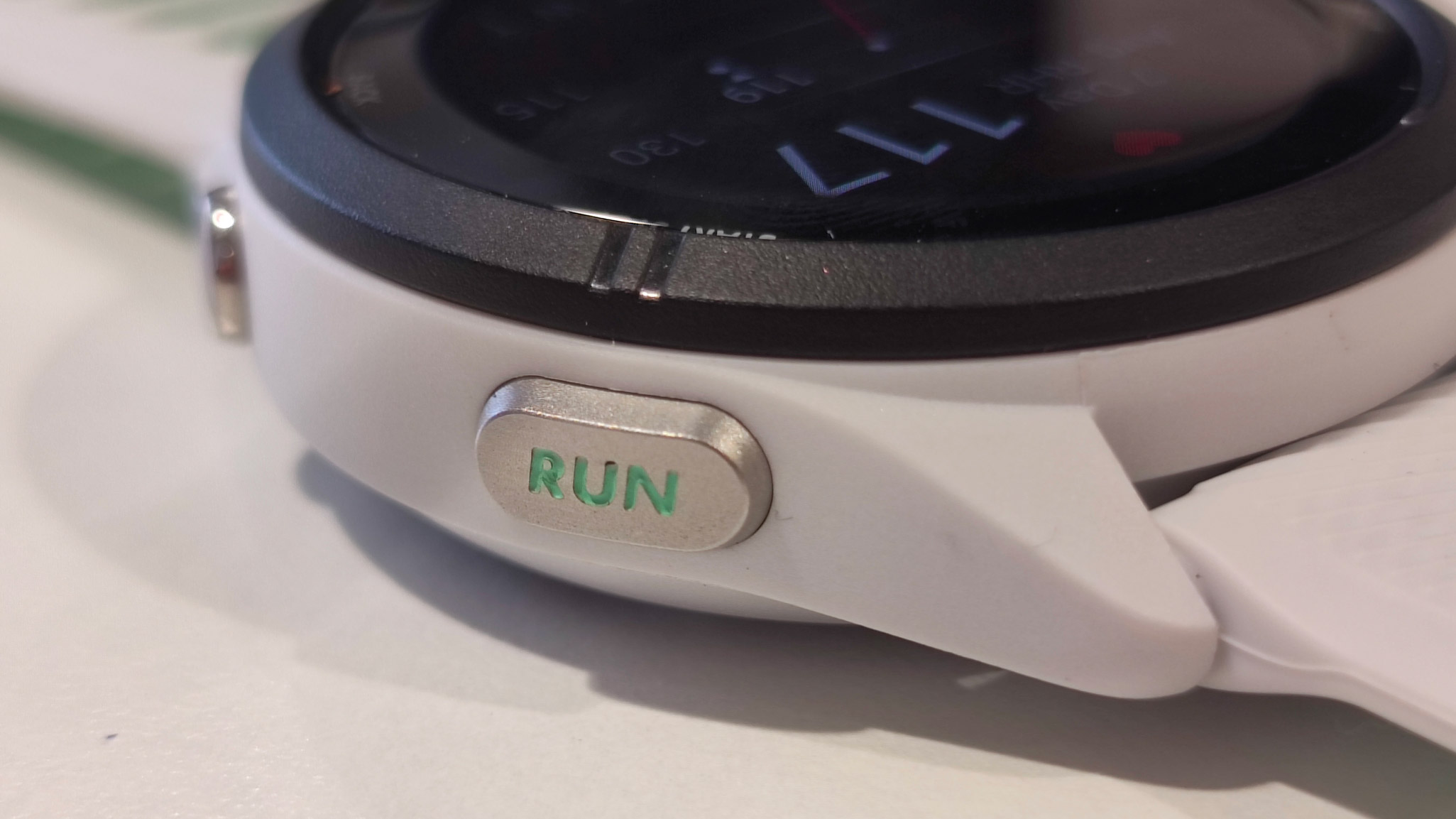
- Touchscreen is responsive
- Training Readiness Score added
- Music included
- No TopoActive maps
The 265S has a few new tricks, the touchscreen being first among them. This is only the second touchscreen that has arrived on the Forerunner series, the first being the Garmin Forerunner 955 last year. You can use the touchscreen to scroll up and down the list, rather than using the buttons, and a tap to hone in on different features, instead of using the Run button to select. But it's an option, not a requirement: if you're training hard, getting sweaty or wearing gloves, you'll default to using the buttons as normal.
The added Training Readiness score is a feature Garmin implemented last year, again on the 955, and it's good to see it filter down toward the smaller watches. An updated version of the Body Battery score, your Training Readiness score takes into account the intensity of your last few sessions of exercise, your sleep, heart rate, time elapsed between sessions, and so on. It then feeds you an updated score based on how ready for performance your body is likely to be.
It's a really useful feature, and I used it a lot on the 955. During my marathon training block I used the Training Readiness score to understand how long it takes my body to recover from big runs so I can plan my tapering strategy ahead of race day. The other side of the Readiness score is the Morning Report, a push notification sent to your watch as you wake up which tells you your Sleep score, Training Readiness score, weather information and a running workout based on your training history.
It’s a really useful feature, but the Training Readiness score was added to the Garmin Fenix 7 via a firmware update last year. Did we need a whole new watch for it this time?
The other nice thing about the 265 and 265S is that music is included as standard: on the previous models, we had the 255, 255 Music, 255S, and 255S Music. The 265 watches come with 8GB storage, enough for plenty of music to see you through long races. However, this won’t be needed for everyone: as a habitual Spotify user, I tend to only really use my watches for music control rather than storing mp4s and so on.
Otherwise, the 265 doesn't seem to have actively lost any features per se, or slimmed down the number of its available widgets. VO2 max, weather and tide information, the 255's impressive running metrics, and Garmin's state-of-the-art GPS are all here. It's still an awesome watch that's only adding to the already-impressive chassis of the 255. But other than the above, it is the 255: a brighter, sleeker, more attractive version, but a 255 nonetheless.
- Features score: 4/5
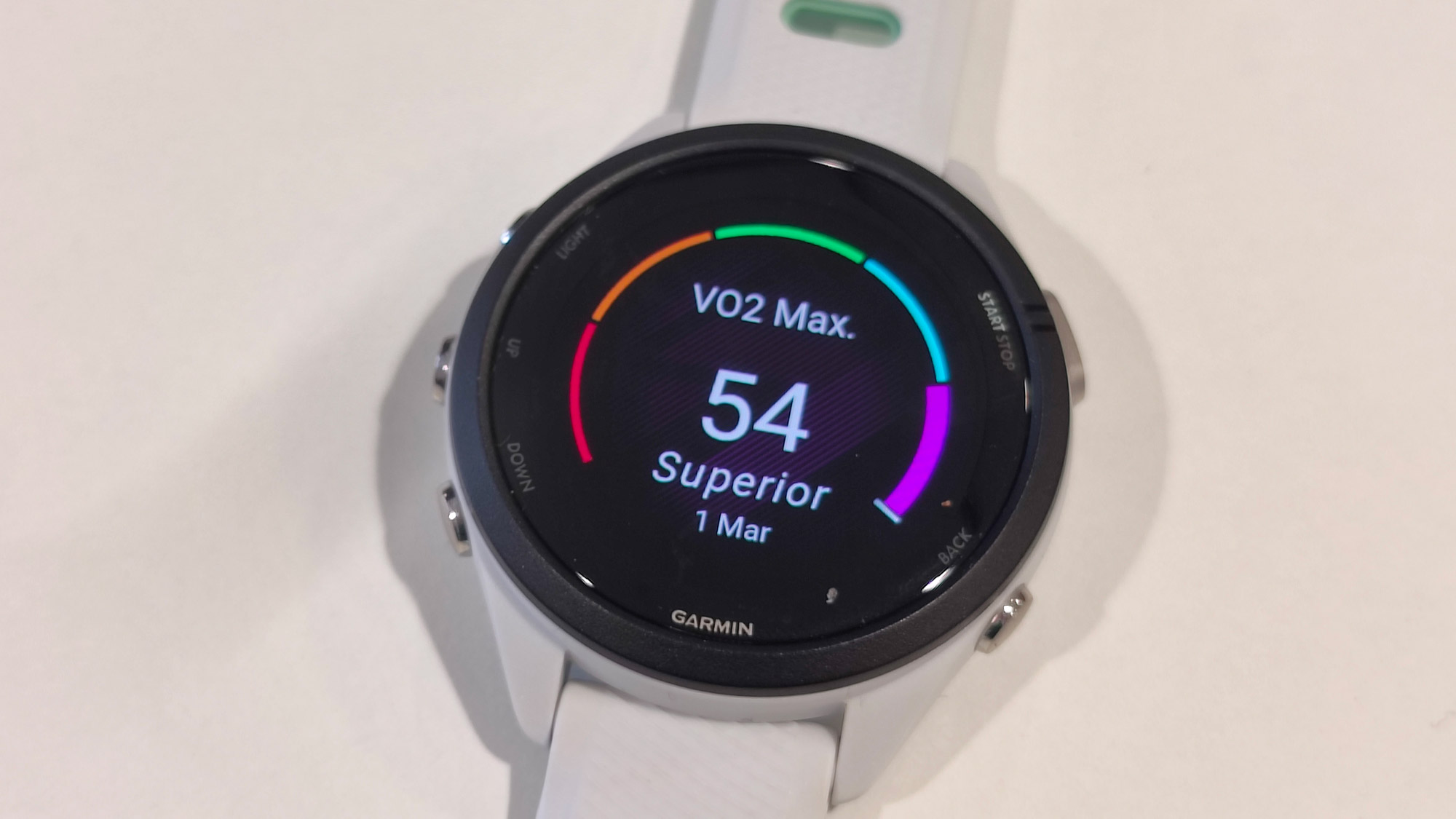
Garmin Forerunner 265: Performance
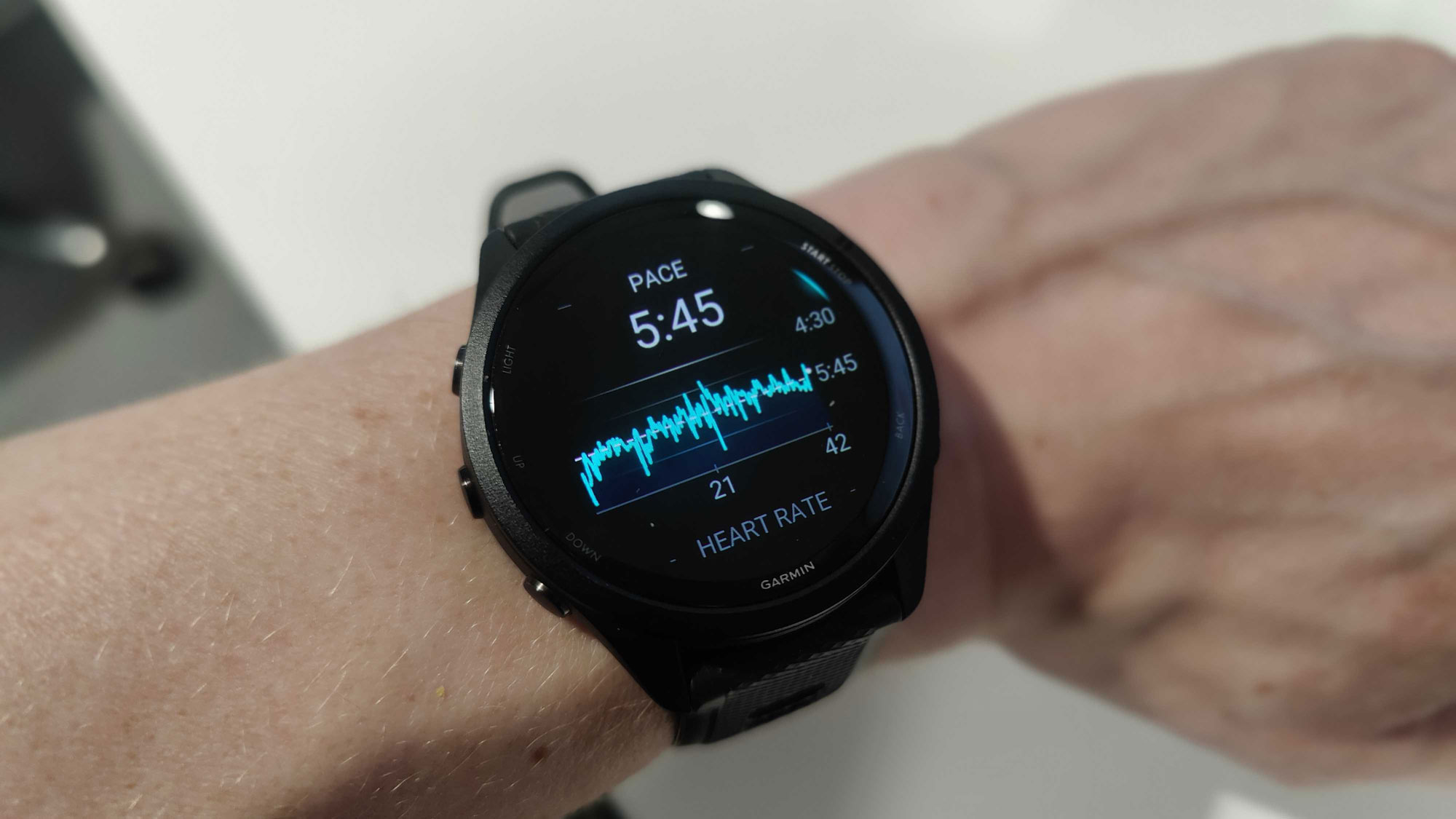
- Great race day choice
- Simple to use, packed with features
- LiveTrack a little buggy
We trialed the Garmin Forerunner 265 for around three weeks, and it’s in daily use that the otherwise small changes listed above make the watch feel fresh and new. The colorful AMOLED screen breathes new life into Garmin’s familiar layout, making heart rate zone graphs, for example, even easier to glance at mid-run. Your eyes are drawn to color, processing color-coded information more efficiently according to scientific research, so one quick glance at your vivid, bright multicolored heart rate graph and your brain will take the information in better than it would on a grayscale MIP.
Otherwise, the watch performed as well as any other watch in Garmin’s stable. I tested the watch’s activity tracking during runs against the GPS on my phone using a competitor app as usual, and found the accuracy in route and time to be exemplary, just like the previous Forerunners. It survived showers and submersion with no issue, and I would be comfortable wearing it during an open-water swim.
During my race, it provided regular times and reports on my progress through my earbuds, and when I no longer wanted to see the race time laid out in its entirety, it took a single button press to change the onscreen view. Incredibly intuitive and easy to do without really thinking about it.
The watch was comfortable on wrist with its soft silicone strap, and although it’s a big watch, it’s not heavy. The 265S is lighter still, making for a comfortable wear on race day. My one missing feature I would add to this watch is TopoActive maps, so you can see terrain easier: on trail runs, they would be both incredibly useful and look ace on the new screen.
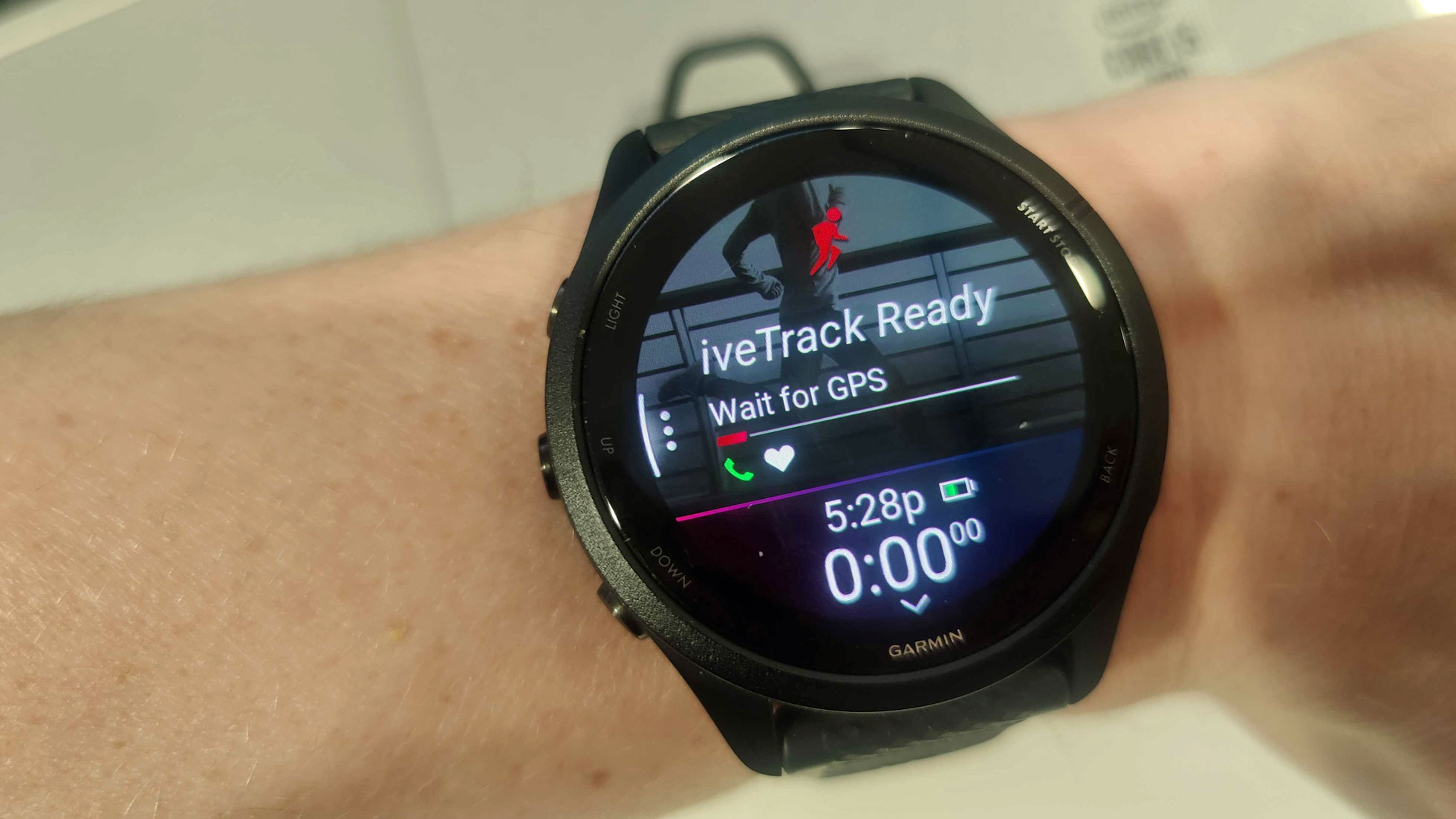
It does come with Garmin’s compass, which operates based on the watch’s rotation and positioning, making it easy to orient yourself, and opportunities to work to find locations based on coordinates. It also comes with TracBack and UltraTrac modes, returning you to the start of your running route. However, TopoActive maps are missed here, although they are present on the Forerunner 965.
LiveTrack is a Garmin feature I’ve used before, which allows contacts listed in your Garmin Connect app to follow you as you run around the course and send encouraging messages to your watch. I did this several times, and for a while it worked a treat.
However, messages came through somewhat sporadically depending on signal, and on one occasion, the map’s English-language captions were replaced with Chinese characters on my wife’s iPhone. I’m currently digging around to see if this is a larger LiveTrack bug, rather than a hardware error, and will update the review accordingly.
Outside of running and trail-finding, the watch looks great and performs well in everyday life. I’ve used it for contactless payments, to accept and reject calls (no speaker or microphone though) and simple one-phrase message replies. Thanks to its redesign and eye-popping screen, it looks and operates with little difference to any common-or-garden Wear OS smartwatch to all but serious gadget geeks.
- Performance score: 4/5
Garmin Forerunner 265: Battery Life
- 13 days in smartwatch mode
- 25 hours in GPS mode
- All claims backed up/exceeded during testing
The Garmin Forerunner 265 is said to last for 13 days in smartwatch mode, and up to 20 hours in GPS mode. The 265S lasts 15 days and 25 hours. These measurements are not great by Garmin standards, but really very impressive for a sub-$500 smartwatch with an AMOLED screen. I’ve found this to be accurate during my testing, as I’ve run for hours with the full-size 265 on GPS mode and barely made a dent in it.
During my training block, the watch lasted around ten days before requiring a change, with near-constant wear and approximately seven hours of running in GPS mode during that period. Recharging the watch to full took around 50 minutes: to do this once every ten days as a keen runner is extremely good.
- Battery life score: 4.5/5
Garmin Forerunner 265: Buy it if...
You're a keen runner
It's an update to one of the best running watches ever, and it looks great with its dedicated Run button.
You're looking to upgrade your old Garmin
Love Garmin's UX, but your old one's crapping out on you? This is the new watch to buy.
You want an Apple Watch competitor
This is the first Garmin Forerunner 200 series with a bright AMOLED touchscreen, and it lasts perhaps 18 times longer than an Apple Watch before it needs charging again.
Garmin Forerunner 265: Don't buy it if...
You've got a 255
It's simply not different enough to recommend the 265 over a 255 you already own.
You want full color TopoActive maps
In order to get TopoActive maps on an AMOLED screen from Garmin, you'll need to shell out for the 965.
You don't run
It sounds quite silly, but despite the increased usability, this is still a dedicated running watch, and shines under these conditions.

Matt is TechRadar's expert on all things fitness, wellness and wearable tech.
A former staffer at Men's Health, he holds a Master's Degree in journalism from Cardiff and has written for brands like Runner's World, Women's Health, Men's Fitness, LiveScience and Fit&Well on everything fitness tech, exercise, nutrition and mental wellbeing.
Matt's a keen runner, ex-kickboxer, not averse to the odd yoga flow, and insists everyone should stretch every morning. When he’s not training or writing about health and fitness, he can be found reading doorstop-thick fantasy books with lots of fictional maps in them.
